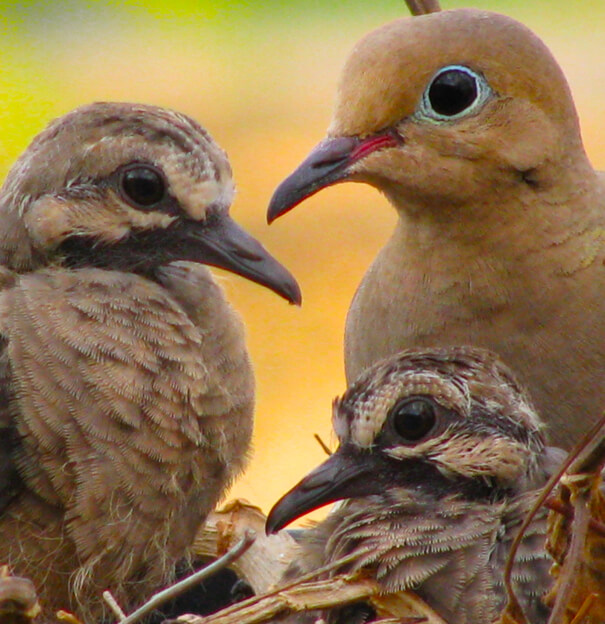Dove Hunters Asked to Consider Stocking Up on Nontoxic Shot as Season Approaches
 |
|---|
| Mourning Doves by Andrew Atzert |
(Washington, D.C., August 13, 2013) September 1 means the start of fall hunting seasons and the beginning of dove season across much of the country. As dove season approaches, American Bird Conservancy President George Fenwick is joining many hunting community leaders in asking hunters to consider stocking up on nontoxic shot (or steel shot) in an effort to voluntarily reduce lead poisoning in doves and other ground-feeding songbirds.
“Purchasing non toxic shot early assures availability and takes advantage of preseason sales. Increasing numbers of hunters have switched to steel shot or are thinking about it so we’d hate to see them get stymied trying to do the right thing,” Fenwick said.
ABC has been encouraging the hunting community to voluntarily switch to non-lead alternatives based on hundreds of peer-reviewed research projects showing that millions of birds are poisoned every year following ingestion of shotgun pellets mistaken for grit or seed. Grit, typically eaten off the ground, is a natural part of many birds' diet.
In some parts of the country, such as the central and western states, declining dove populations have been a cause for concern. Lead poisoning could be one of several factors contributing to the declines, but it is a factor that has a simple solution: nontoxic shot.
- Unpublished data from the Missouri Department of Conservation show that on a public hunting area near Kansas City, Missouri, during
September 2005, 1 ,425 hunters reported firing almost 40,000 rounds of shotgun ammunition on and around 185 acres of managed sunflower and wheat fields. This resulted in the deposition of approximately 2,500 pounds of lead on the entire area, or 13.5 pounds of lead per acre of managed dove field, or more than 75,000 lead pellets per acre of managed dove field. Thus, concern about the toxic effects of spent lead shot is greatest for doves because dove hunters can deposit enormous quantities of lead shot on relatively small areas. - During 2011, dove hunters killed 14.5 million doves nationally using approximately five shots per bird on average (assuming all hunters were using 12-gauge shotguns and one-ounce small game loads with #8 shot). This amounts to almost 30 billion lead pellets, or roughly 4.5 million tons of lead, scattered around managed fields designed to attract feeding birds.
- Experimental evidence from wild Mourning Doves held in captivity showed that virtually all doves ingesting lead pellets eventually succumb to the direct or indirect effects of lead poisoning. Studies suggest that it may be possible that 8.8 to 15 million Mourning Doves are dying from lead poisoning annually—roughly the same number of doves legally harvested.
“A Mourning Dove ingesting a single lead pellet is essentially a dead dove. Voluntarily using nontoxic shot for dove hunting isn’t anti-hunting; it is pro-wildlife and pro-environment,” Fenwick said.


















































